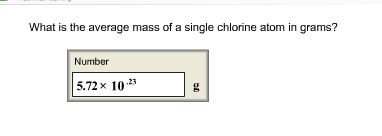

Differences between experimental and theoretical details are discussed. Theoretical reaction channels are also accounted for, optimized under M06-2X/6-31 + G(d,p) level and ionization potentials of products are calculated under M06-2X/6-31 + G(d,p) level also. And experimental ionization potentials are procured for direct adducts of methyl methacrylate to be 8.30 eV and for that of ethyl acrylate to be 9.95 eV which are well consistent with theoretical ionization potentials of likely isomers. It may either be included in the outer ring of electrons in the chlorine atom or oscillating between the two atoms. The direct or indirect products are detected, indicating secondary reactions. Atom centres are colour-coded according to element with prongs set at the correct bonding angles. It is mostly present in cell fluid as a negative ion to balance the positive (mainly potassium) ions.

The ratio observed in this case is 9:6:1.the compound containing 2 chlorine atom have difference in ratio due to isotopes attached with fragments. The number of neutrons in an atom can be determined by the difference between the atomic mass and the number of protons. With another chlorine atom it forms a covalent bond, forming Cl2 Cl2 is nonpolar, since both ends of the bond have the same electronegativity. Therefore, a chlorine atom has seventeen protons and seventeen electrons. Answer (1 of 2): To make a bond you need at least two atoms. The atomic number of an element is equal to the number of protons and electrons in that element. Chlorine is the 17th element of the periodic table so its atomic number is 17. Biological role The chloride ion is essential to life. The organic compound having two chlorine atoms show three peaks due different combinations of isotopes of chlorine are attached with carbon and hydrogen. Chlorine is a classified halogen element and its symbol is Cl. Products are distinguished, C5H8O2Cl for addition, and C5H7O2, C5H7O2Cl and C5H9O2Cl for abstraction. Chlorine gas is itself very poisonous, and was used as a chemical weapon during the First World War. 248 nm laser radiation is used to initiate the reaction. 263-269 ISSN: 0045-6535 Subject: chlorine, energy, esters, gases, ionization, isomers, spectrometers, ultraviolet radiation Abstract: Reactions between chlorine and unsaturated esters in gas phase are examined in a slow-flow reaction tube inside the laboratory-built photoionization mass spectrometer at the energy range of 8–11 eV.

35.5 CI chlorine izci 2,8,7 Representing ionic bonding When atoms react. The sodium (Na) atom transfers one electron to the. Sources, facts, uses, scarcity (SRI), podcasts, alchemical symbols, videos and. Although ozone depletion is occurring in the stratosphere, the depletion is especially marked over the Antarctic region. The proton has a positive charge so the sodium atom has now become a positively. When sodium and chlorine atoms come together to form sodium chloride (NaCl), they transfer an electron. Element Chlorine (Cl), Group 17, Atomic Number 17, p-block, Mass 35.45.CFC has disrupted this balance and increase the degradation of Ozone gas which is called Ozone depletion.Image via Wikipedia Chlorine is a substance that has many different uses in industry, commercial cleaning, leisure, and even the home. Answer: Chlorine has two isotopes and the mass of an atom is taken as the average mass of all the naturally occurring atoms of that element. Ozone gas is continuously formed by the action of UV rays on molecular oxygen and also degraded into molecular oxygen in the stratosphere. A chlorine atom with 17 electrons shared across three shells.Chlorofluorocarbons(CFC) are responsible for ozone layer depletion.The correct answer is Chlorofluorocarbons.


 0 kommentar(er)
0 kommentar(er)
